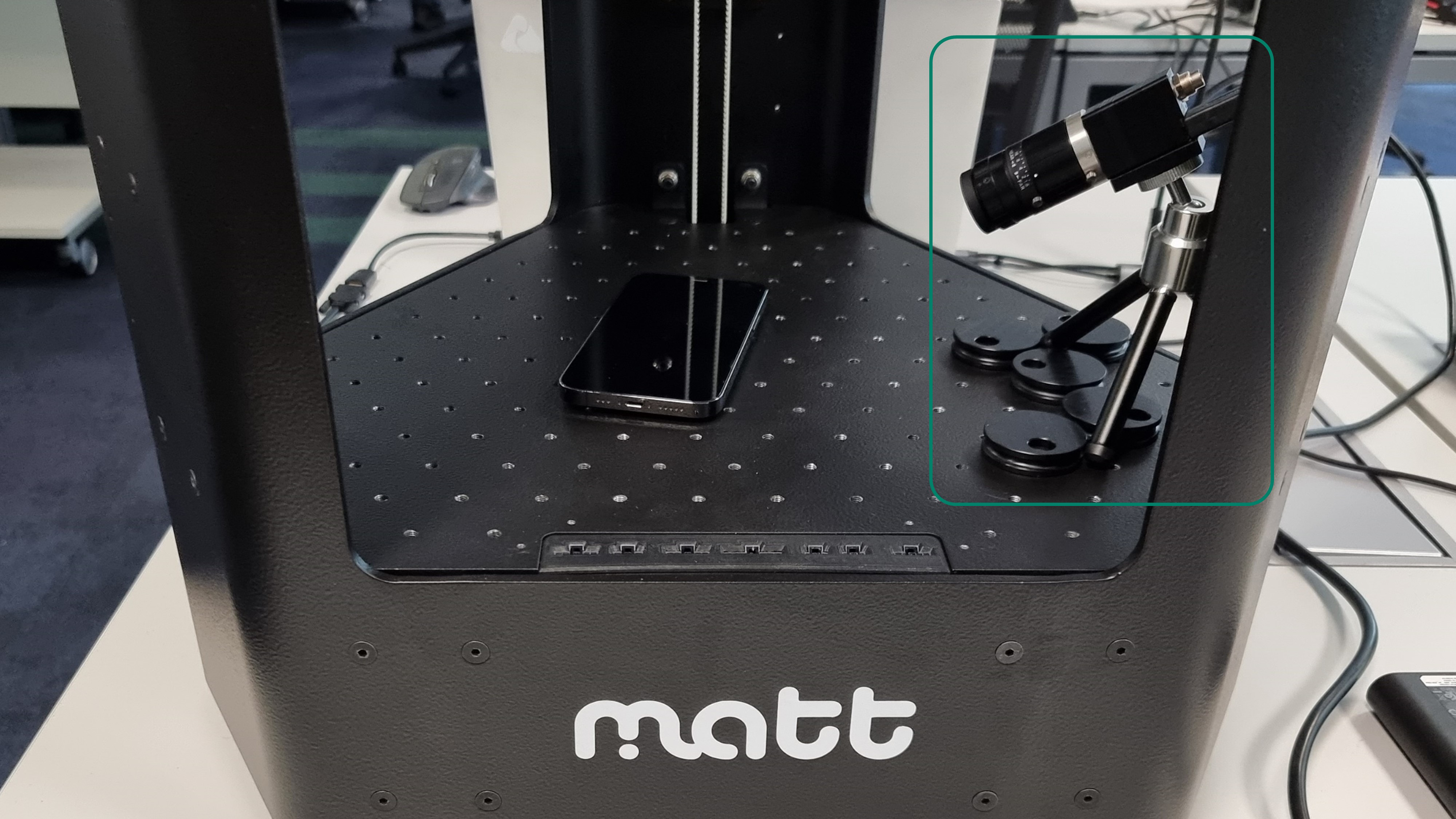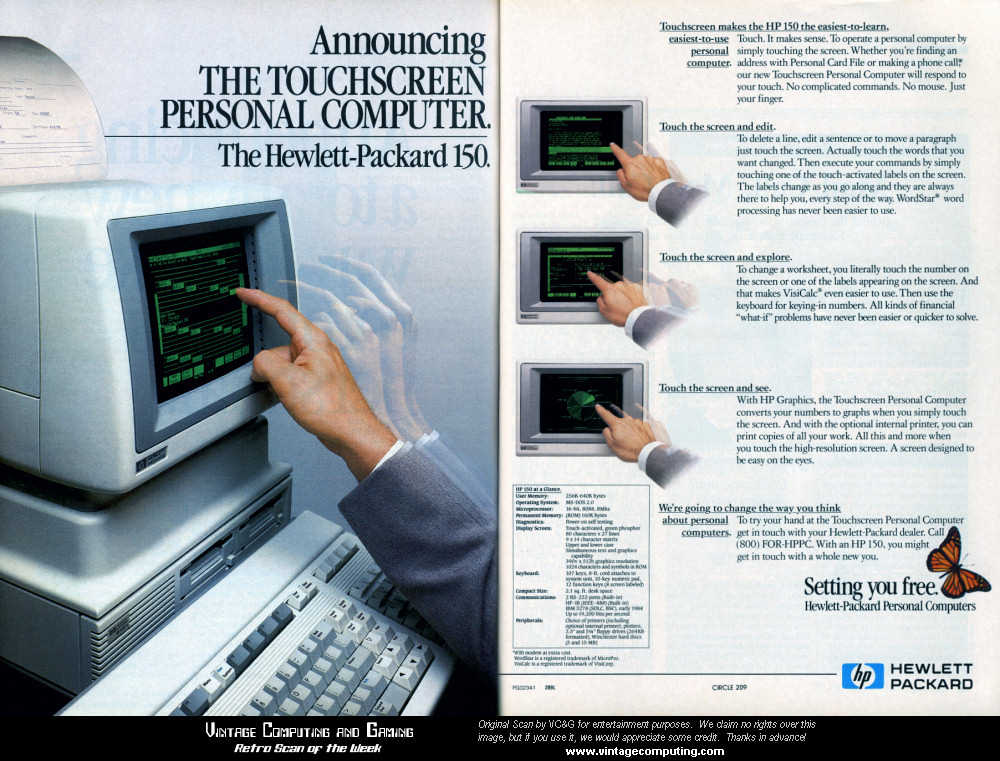
Touchscreens have revolutionized the lives of smart device users by making many tasks easier. However, not all touchscreens are alike in terms of their performance, and not all share the same drawbacks, with touchscreen response time being an essential measurement to ensure optimal functionality.
One of the first commercially available computers that featured a touchscreen interface was the HP-150, released in 1983. It used infrared light beams to detect the finger interacting with the display. The light beams were emitted from holes around the bezel, which made them prone to getting clogged by dust, hence requiring additional cleaning when in continuous use.

State of touch
Touch screens today have evolved to the point that they can measure finger movements way faster than the screen can update. These high sampling rates quickly became very appealing to final users (especially to the mobile gamers communities). For example, the ROG Phone 6 from Asus features a 720Hz touch sampling rate and a screen refresh rate of 165Hz.
Modern-day touch screens have become so fast that the sensing itself is no longer the slowest part from the user experience point of view. Device performance started playing a more significant role, considering that the user interacts with an app on the phone, not just its touchscreen display.
Touchscreen response time measurements for consistent user experience
One powerful technique for discovering potential performance issues is repeating the same test several times or for an extended period. For example, gaming benchmarks take a record of the system’s performance metrics such as minimum, average, and maximum FPS achieved during a test run. Comparing multiple measurements with one another can generate meaningful conclusions. For instance, if the application runs fast, it should obtain a high average FPS. However, observing a significant difference between average and minimum FPS values can indicate potential performance issues like stuttering or lag.
A similar approach could also be applied to measure latency accurately. Such a system would need to:
- Repeat the test multiple times
- Compute average, maximum, and minimum latencies observed
- Analyze the results to find inconsistencies
The most frequent source of frustration for mobile users is when the keyboard fails to open. Even though the keyboard usually opens quickly, if it fails to do so once, the user may accidentally start typing in the wrong place. Various factors, such as background tasks, picture-in-picture, GPS usage, and network activity can generate these inconsistencies. By automatically measuring device latency, it is possible to identify such inconsistencies and improve the user experience of modern smartphones.
As previously stated, the user's experience is determined more by the performance of the device rather than the refresh rate of the touch screen. In the upcoming chapter, we will explain how a black-box method for measuring device latency should work.
How to perform touchscreen latency measurements (use case)
A black box testing technique refers to the evaluation of the entire system, end-to-end, from the perspective of the end user. This means that there is little focus on the architecture or code of a system, but there are expectations for receiving the appropriate response to requests simulating user’s activity. For this, everyday use of devices is simulated, to observe if devices deliver the promised outcome.
As describing a whole device performance testing is a lengthy, complex process, the following paragraphs are going to address how a black box method for determining device latency is put into practice while using MATT, the smart device testing robot. The final objective is to determine how long it takes a smartphone’s touchscreen to “wake up” or the time registered between the moment the screen is tapped on and when it fully lights on.
Set-up
To guarantee result accuracy, the smartphone is mounted and secured on MATT’s testing platform. For this use case, MATT with a one-fingered effector is used (as the use case requires only a simple tap; for multitouch testing requirements, a three-fingered effector is recommended). A tripod and a tripod adapter are used to set the high-speed camera in place on the testing robot’s platform, externally of the testing area. The high-speed camera comes as an extrinsic element, necessary to the touchscreen response time measurement process.
The latency measurement process using a block box method
The preliminary set-up consists of mounting the smartphone on MATT’s testing platform, the high-speed camera is positioned to assure maximum visibility of the phone’s touchscreen and observe the process unimpaired. While filming, the high-speed camera should capture three main actions, essential for the latency measurement process. First, is the moment MATT’s effector starts descending towards the testing area, signaling the beginning of the “tap input” execution, followed by the actual point in time when MATT’s finger touches the phone signaling the screen input has been accomplished, the third and final registered action being the moment when the screen starts to light up.
The high-speed camera captures fast movements (in this case taps) at the precise time they happen, hence obtaining the necessary information to determine the variable of interest.
Once the latency measurement recording setup is finalized, the next step is to define MATT’s actions. As in its everyday use by end users, to activate the smartphone’s touchscreen (‘wake’ the smartphone) a single tap must be performed for iOS devices and a double-tap gesture for Android devices.
Gesture Automation
In the process of determining the wake latency of a smartphone’s touchscreen, MATT is programmed to carry out two operations: performing the actual screen input that prompts the phone to “wake up”, and returning the moment of time when the tap has happened.
To ensure a replica as accurate as possible of the end-user's interaction with the device, the effector’s tapping speed is adjusted to 500 mm/s, equivalent to a person fast tapping the screen. The coordinates of where the input will take place are adjusted, making sure MATT executes the right action (in the center of the touchscreen for this particular use case since the necessary input is described by a simple tap).
As observed, through straightforward procedures, MATT finalizes the first operation of the latency measurement process.
Measuring touchscreen latency using a high-speed camera
The externally mounted high-speed camera captures and records the whole carried-out process, execution of the tapping action, and wake moment of the touchscreen as a response to the input.
After having the screen waking process recorded and information stocked frame by frame to disc, the data is processed to determine how long it takes the touchscreen to ‘wake up’ after it has been tapped on. By comparing frames’ entropies, the analysis is focused on observing disturbances of the output sizes determined by applying a lossy image encoding function to every frame. When changes start being visible in the values of the output sizes, the moment when the screen starts to ‘wake up’ and when it is fully ‘woken’ can be determined. As a result, it can be observed how the input of MATT’s finger on the touchscreen affects the encoding size.
To achieve the above-defined actions, obtain the needed measurements, and finally process them to observe the time latency between the interaction with the touchscreen and the screen ‘wake-up moment’, extends to a process that needs to be explained and defined on its own. For this reason, the methodology of how touch screen latency has been determined using high-speed cameras has been extensively described in a separate whitepaper, covering technical aspects and results.
Step-by-step automated device latency identification. Learn from the whitepaper
Download the supporting whitepaper including the code used to perform and identify the device latency automatically to learn more.
Here is another article talking about the importance of touchscreen response time measurement in the mobile gaming industry.
Adapta Robotics specializes in designing and building robotic solutions for businesses. To support automation and drive progress, the Adapta solutions are not only high-performance, but also user-friendly and adaptable, integrating computer vision, AI, and the latest in hardware technology. All are supported by in-house innovation in hardware, software development, and manufacturing, expertise in AI, and cross-industry knowledge, and executed by the Adapta team of dedicated engineers with strong robotics and R&D background.